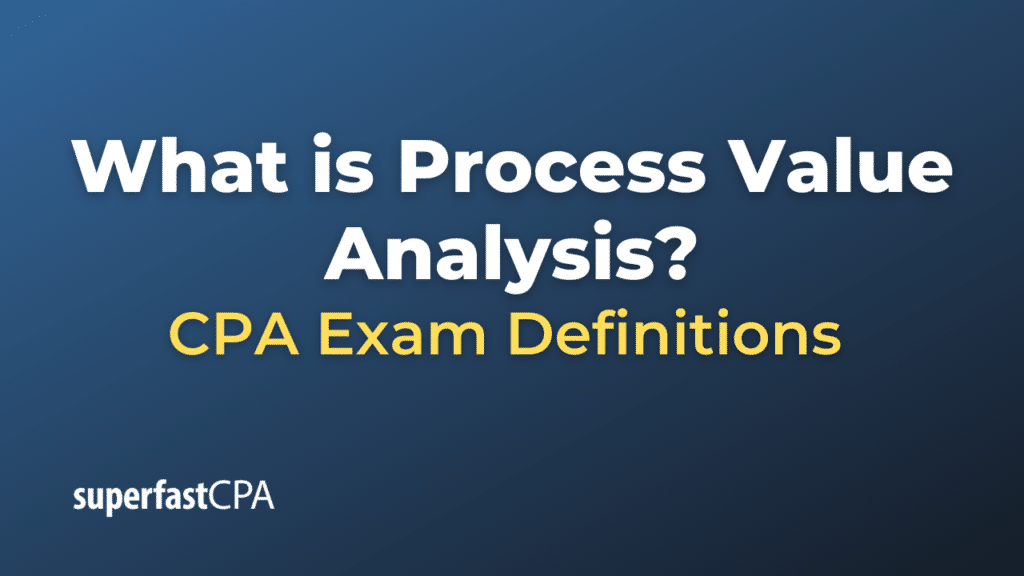Process Value Analysis
Process Value Analysis (PVA) is a method used to identify and eliminate non-value-adding activities within a business process. It’s a part of the larger concept of value analysis, which is focused on improving the value of products or services by examining all aspects of their production or delivery.
In Process Value Analysis, the emphasis is on scrutinizing each step in a process to determine whether it adds value from a customer’s perspective. If it doesn’t, the step might be a candidate for elimination or modification to reduce costs, improve efficiency, or enhance the quality of the output.
Here’s a basic outline of how a Process Value Analysis might work:
- Define the Process: Clearly outline the process you want to analyze. This might involve creating a flowchart or diagram of the process steps.
- Analyze Each Step: Look at each step in the process and ask whether it adds value. To do this, you might ask whether the customer would be willing to pay for this step if they knew about it, whether it changes the product or service in some important way, or whether it’s required for regulatory compliance.
- Identify Non-Value-Adding Activities: Any activities that do not add value from the customer’s perspective, do not transform the product or service, and are not required for compliance are considered non-value-adding.
- Eliminate or Modify Non-Value-Adding Activities: Once identified, efforts are made to eliminate these activities or modify them to add value.
By eliminating non-value-adding activities, companies can often reduce costs, improve efficiency, and provide a better product or service to their customers. It’s a crucial part of continuous improvement and lean management methodologies.
Example of Process Value Analysis
Let’s take an example of a furniture manufacturing company that decides to perform a Process Value Analysis (PVA) on its manufacturing process to improve efficiency and reduce waste.
The process steps might be as follows:
- Sourcing Materials: The company purchases high-quality wood and other materials from various suppliers.
- Storing Materials: The materials are then stored in a warehouse until they’re needed.
- Cutting Materials: Workers cut the wood into the required shapes and sizes based on the furniture designs.
- Assembling Furniture: The cut pieces are assembled to create the final product.
- Sanding and Finishing: The assembled furniture is sanded down and finished with paint or varnish.
- Quality Checking: Each piece of furniture goes through a quality check before it is shipped.
- Packaging: The furniture is packaged for shipping.
- Shipping: The furniture is shipped to various retail locations or directly to customers.
After performing the PVA, the company identifies that the storage step (Step 2) does not add value to the final product from the customer’s perspective. The customer is not willing to pay extra for storage, and it does not change the product in any way.
Upon further investigation, the company finds out that some of the materials are stored for an extended period before being used, which increases storage costs and the risk of material damage.
Based on this analysis, the company decides to switch to a just-in-time inventory system where materials are ordered and delivered as they are needed in the production process, thereby eliminating the need for long-term storage.
This change reduces costs, decreases the risk of material damage, and potentially allows the company to respond more quickly to changes in demand, making the entire process more efficient and valuable.













